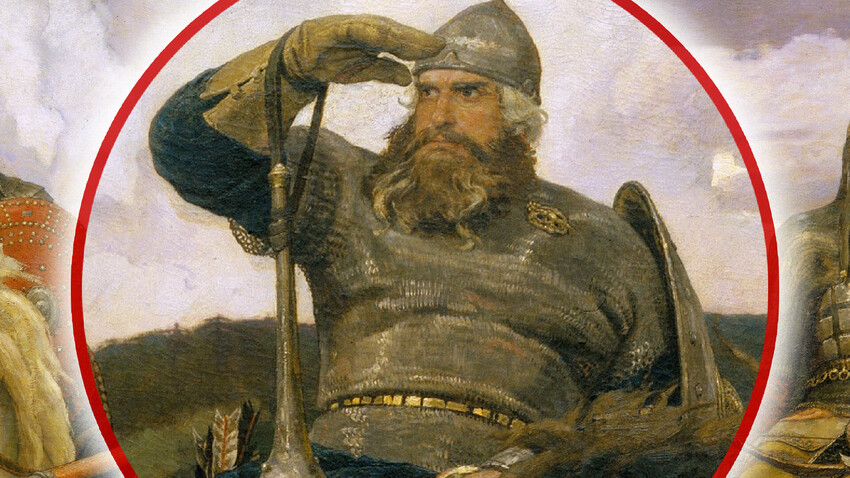
A fragment of Viktor Vasnetsov's 'The Bogatyrs' painting
Tretyakov GalleryEvery Russian child from a very young age knows who Ilya Muromets is: the strongest and bravest among Russian ‘bogatyrs’ (warrior knights). Basically, Russia’s answer to Hercules. An invincible warrior who can vanquish any opponent, be it another ‘bogatyr’ (the bad kind) or Solovei-Razboinik (Nightingale the Robber) or some ‘Idolishche Poganoye’ (a mythical figure that personifies paganism), for that matter.
In the famous painting by Viktor Vasnetsov, 'The Bogatyrs', Ilya Muromets is shown in the very center of the group and appears to be larger and stronger than his comrades and even his horse looks more sturdy.
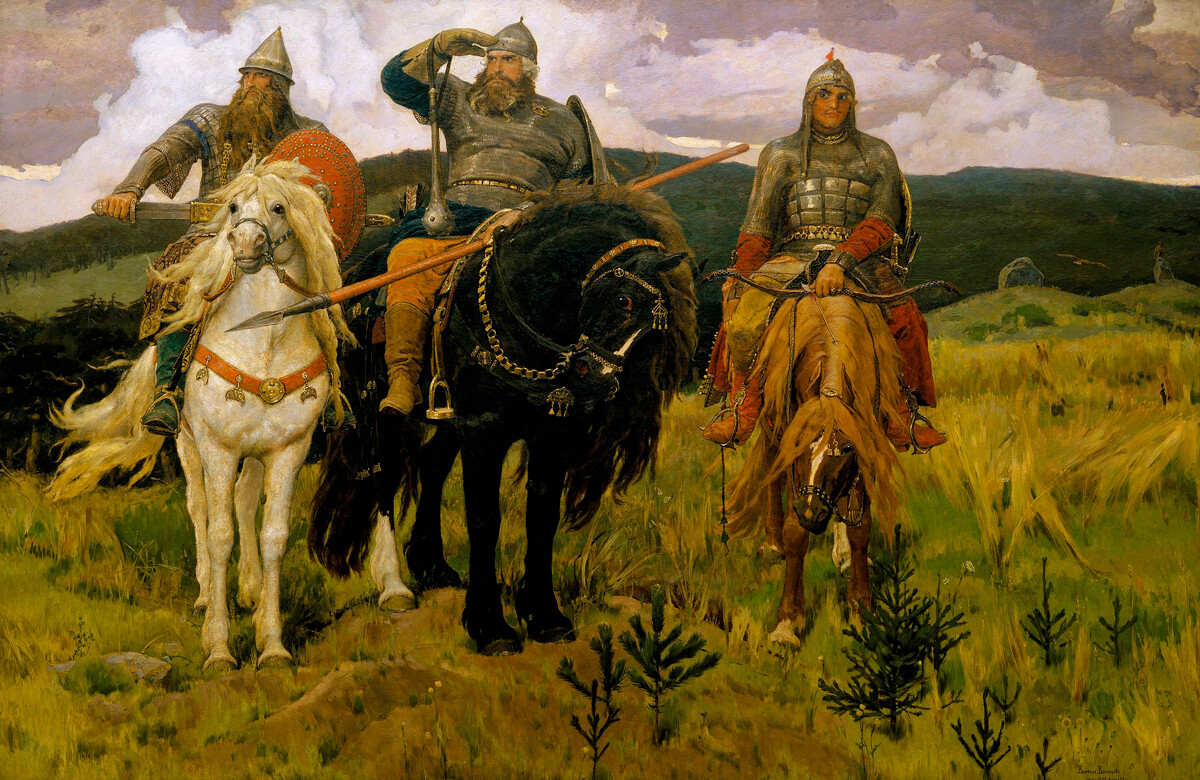
Viktor Vasnetsov. 'The Bogatyrs', 1881-89
Tretyakov GalleryMost likely, it was also Ilya Muromets who Vasnetsov depicted in his painting 'Heroic Leap'. He has a sword, a shield, a lance and a whip and his horse is rearing up towards the skies.
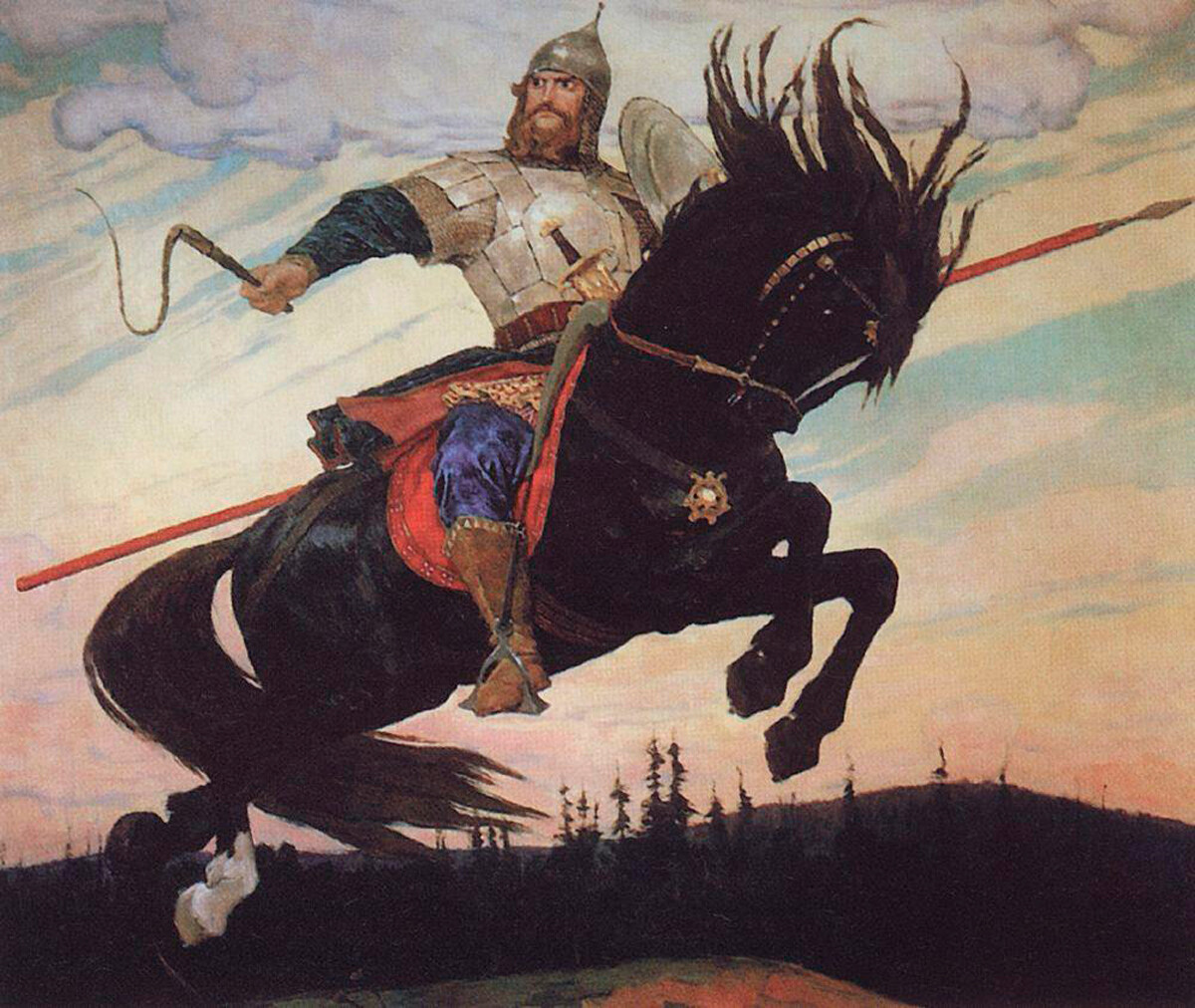
Viktor Vasnetsov. 'Heroic Leap', 1914
Viktor Vasnetsov House MuseumSoviet movie director Aleksandr Ptushko, who literally brought Vasnetsov's paintings to life on the screen, put Ilya Muromets on a raven-black horse (You can watch his movie 'Ilya Muromets' here).
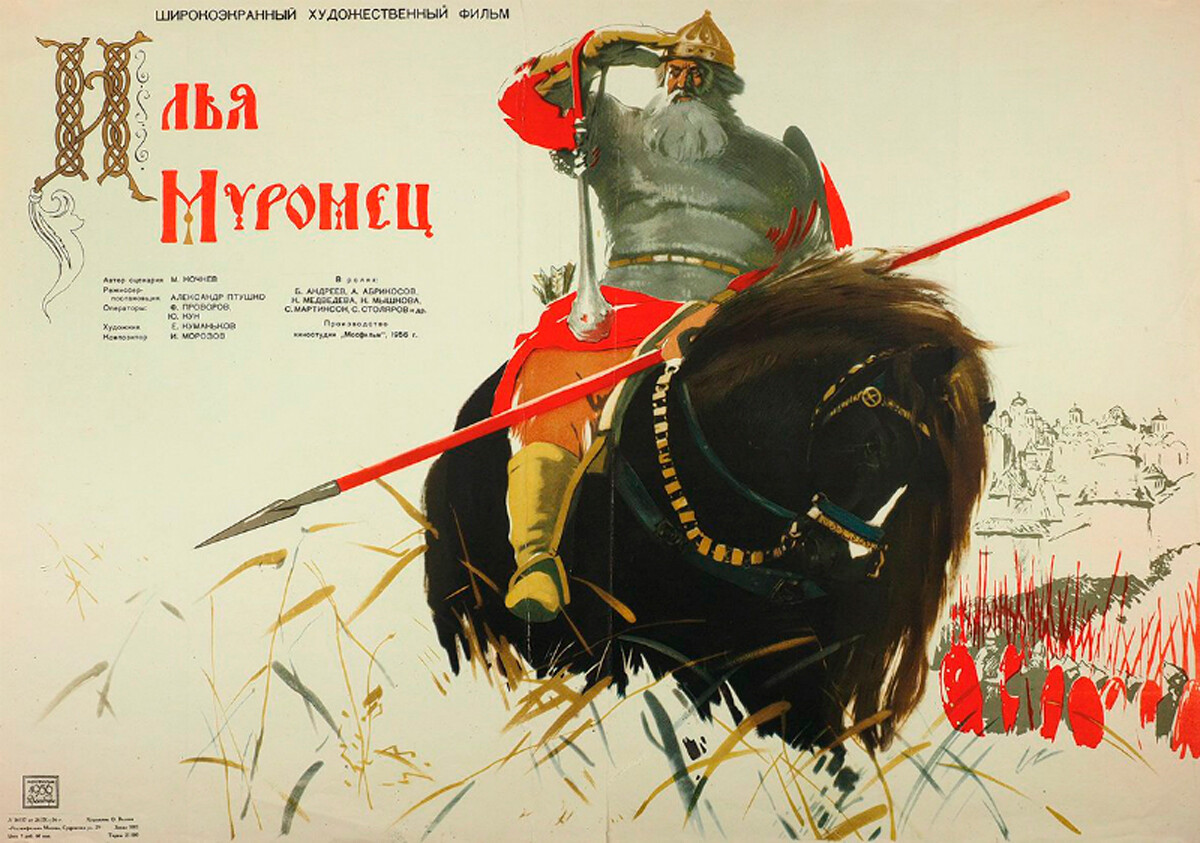
A poster for 'Ilya Muromets' movie, 1956
O.Volkov/Reklamfilm publicationsFirst of all, he is a popular folklore hero of numerous folk epics known as ‘byliny’. The legendary figure of Muromets is so famous that he even made his way into Scandinavian and German folk epics, in which he features as a Russian ‘bogatyr’.
For the first 33 years of his life, Ilya, from the town of Murom, was paralyzed – essentially, he lay on a stove without getting up while his elderly parents looked after him. However, one day, some elders visited him and they not only cured him of his ailment, but also gave him superhuman strength. And they told him to go to serve Prince Vladimir the Red Sun (Prince Vladimir Sviatoslavich, who baptized ancient Russia, could, at a bit of a stretch, be described as his prototype).
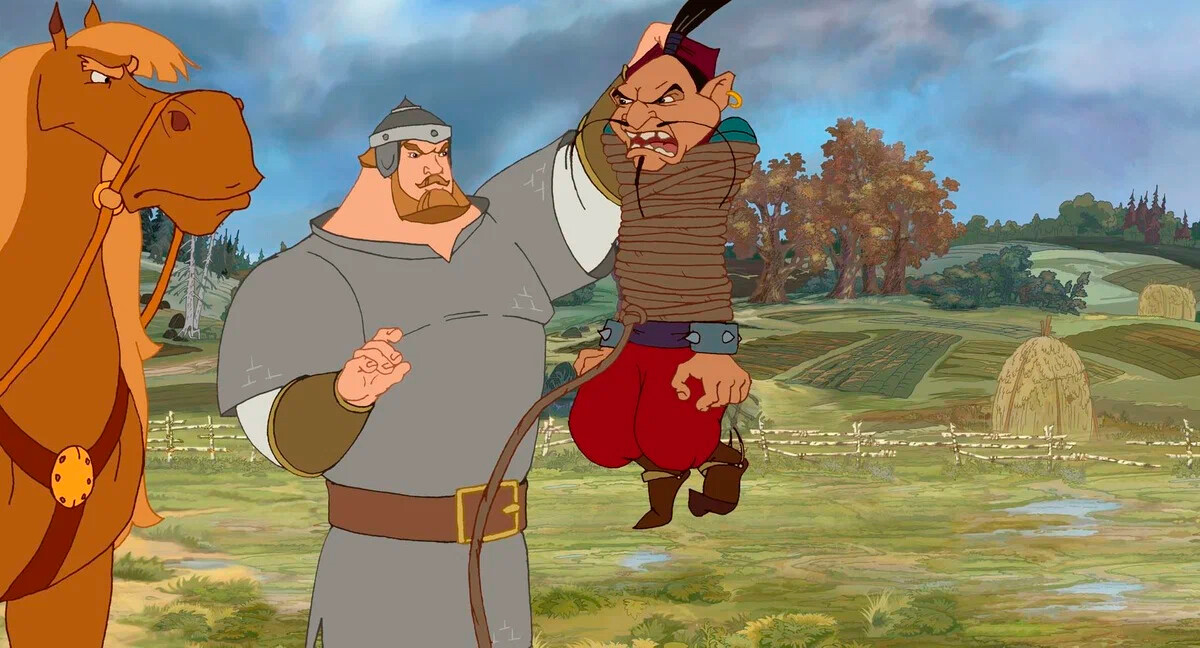
A still from 'Ilya Muromets and Solovey-Razboynik' animated movie
Vladimir Toropchin, 2007/CTB Film CompanyAnd so, Ilya Muromets began to fight for ancient Russia and defend it against enemy raids or evil creatures. Present-day life coaches should take a closer look at the legend and use it as an example – it is possible to turn your life around and achieve success at any age.
Even though Ilya Muromets was one of the most popular folklore heroes, there is no mention of him in any chronicles. The Russian folk epics were only written down in the 18th century and, until then, they had been passed on by word of mouth. Thus, each region had its own variations of the stories and there are even several different versions of how the ‘bogatyr’ died – he either turned to stone or voluntarily lay down in his coffin or sailed off into the unknown.
The events described in folklore relate roughly to the 10th-11th centuries. The time interval is too great to be able to say for sure whether Ilya Muromets really existed or what real figure lies behind this composite character.
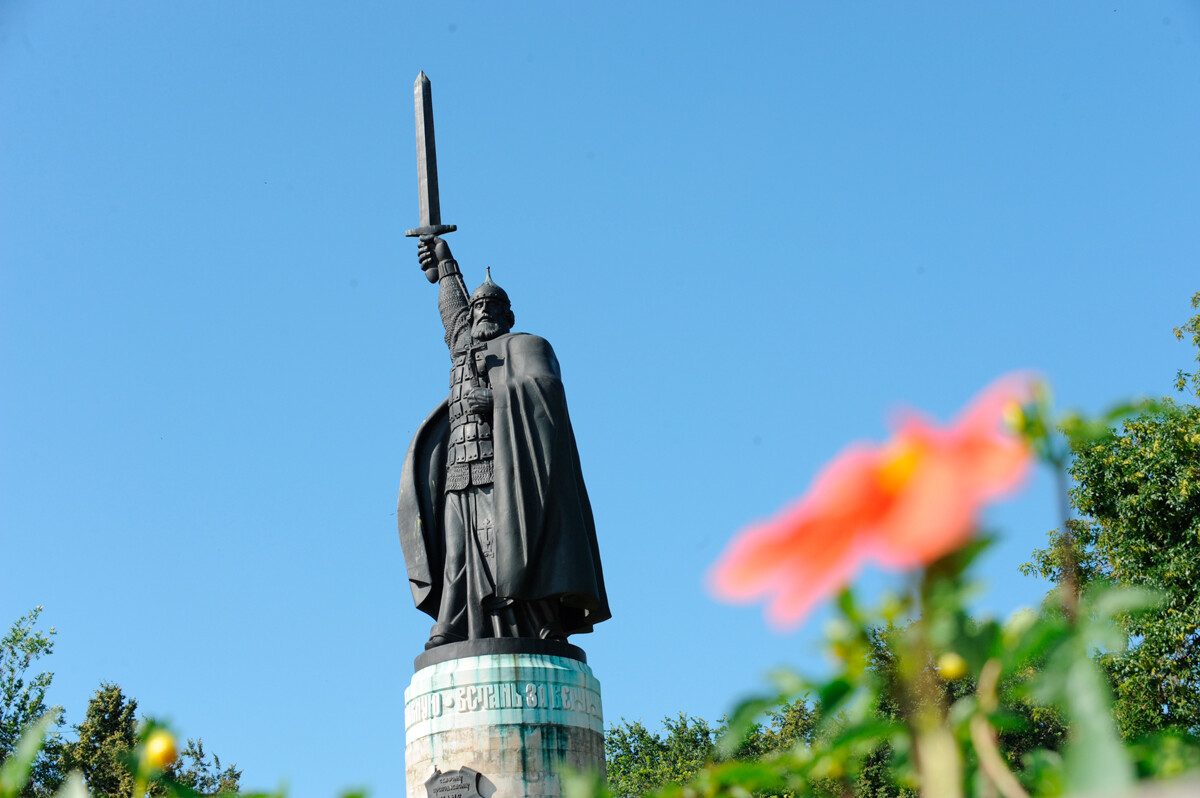
Monument to Ilya Muroments in Murom
Sergei Pyatakov/SputnikClosest of all to the ‘bogatyr’ was the figure of Saint Ilya Muromsky (Pechersky), who is most often regarded as the prototype for Ilya Muromets. Saint Ilya Pechersky is commemorated in Russia on December 19 (according to the Julian calendar) and January 1 (according to the Gregorian calendar). Born in Murom, he was a monk at the Kiev-Pechersk Lavra monastery. Many legends circulated about his physical strength and how he fended off enemies who had attacked the monastery with just his boot. Before entering the monastery, it is possible he was in military service for the grand prince of Kiev.
The earliest written evidence for the existence of such a monk dates back to 1638, while, in 1643, he was canonized (along with a number of other Kiev-Pechersk monks).
The remains of Ilya Pechersky lie in the caves of the Kiev-Pechersk Lavra and the preserved right hand, as if in a gesture of prayer, is particularly noteworthy: The index and middle fingers are held straight and placed together, while the fourth and little fingers are curled down. (This two-finger gesture for making the sign of the cross was customary prior to the church reforms of the 17th century).
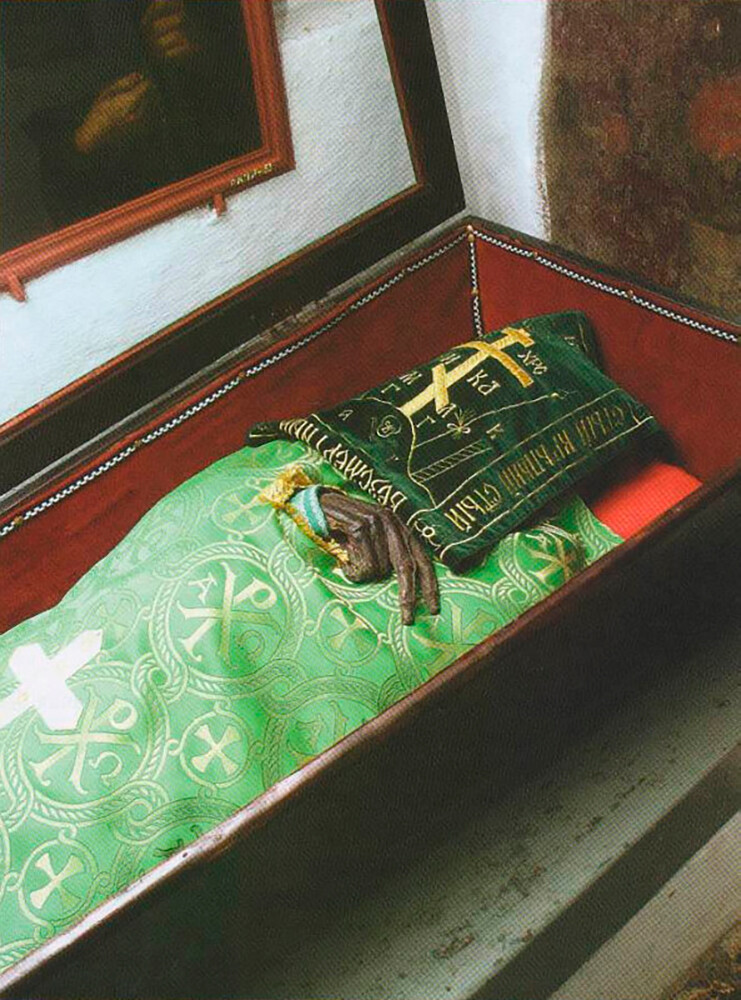
The relics of St. Ilya Muromets in the Kiev-Pechersk Lavra
(CC BY-SA 3.0)An examination of the remains was conducted in the Soviet era and it was established that the relics are of a sturdily-built man around 1.77 meters (5ft. 10in’) tall, which, for the 12th century, was regarded as an above-average height. The approximate age at death was also determined: 40-45 years. Additionally, a spear wound scar was discovered on one of the hands, lending support to the theory of the monk's military background.
This is why he is regarded as the patron saint of various branches of the armed forces and why, on many icons, he is portrayed with a sword or lance and on horseback.
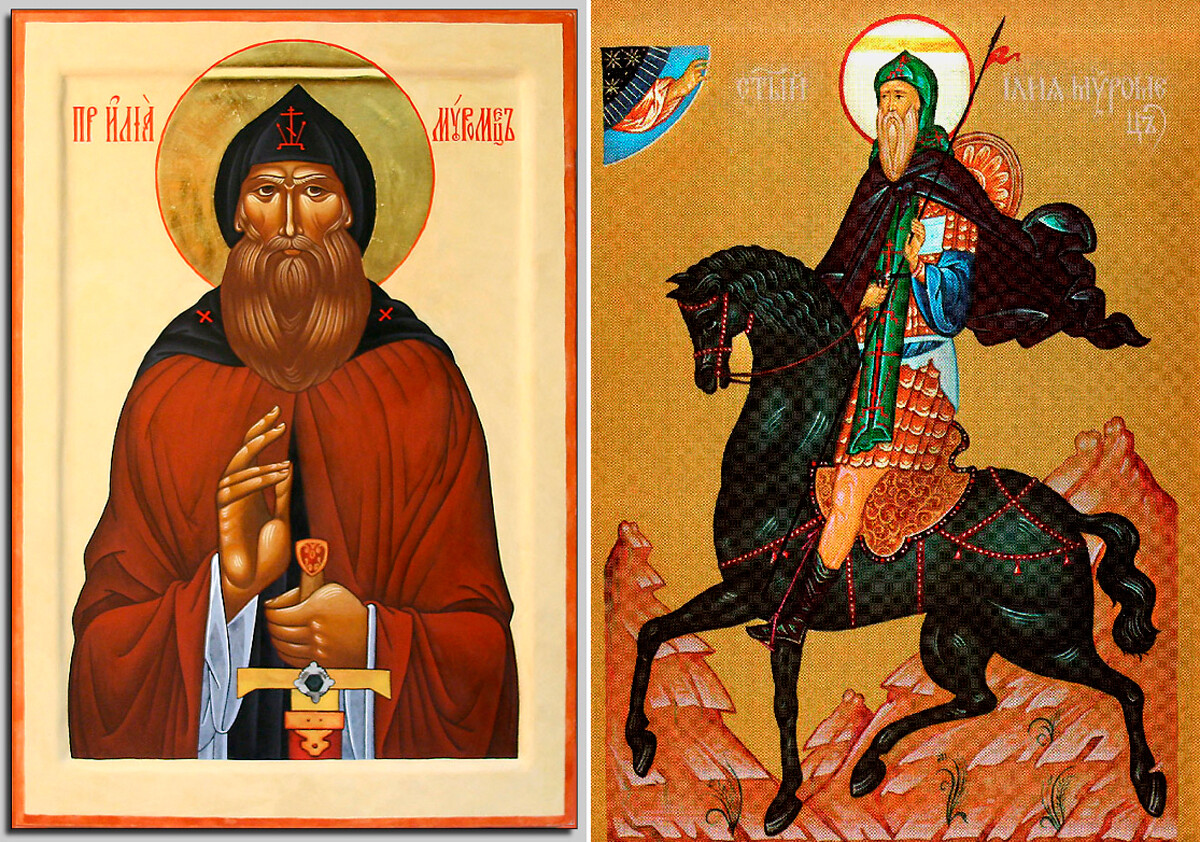
Icons devoted to St. Ilya Muromets, late 19th century
Public domainBut, most interestingly, the Soviet experts discovered defects in the spine, which could provide evidence that he had suffered from a musculoskeletal disease in his younger days. So, it is possible that Saint Ilya, like his alter ego from the ‘byliny’, had mobility problems in his youth and was, subsequently, miraculously cured and gained his strength.
What is more, in the Russian Orthodox mind, the Ilya Muromets of folklore was frequently mixed up with the biblical Prophet Elijah (usually rendered as ‘Iliya’ in Russian, which is the archaic form of ‘Ilya’). And, when peals of thunder and bolts of lightning filled the air, it was believed in ancient Rus’ that Elijah or Iliya was riding his chariot across the sky.
Dear readers,
Our website and social media accounts are under threat of being restricted or banned, due to the current circumstances. So, to keep up with our latest content, simply do the following:
If using any of Russia Beyond's content, partly or in full, always provide an active hyperlink to the original material.
Subscribe
to our newsletter!
Get the week's best stories straight to your inbox